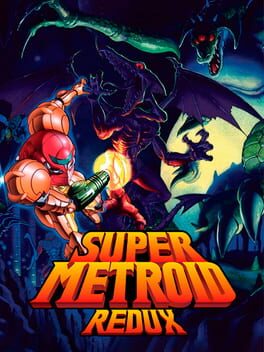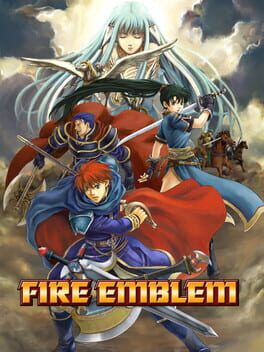taramemed
Really loved playing Shadow Dragon, my second FE after Blazing Blade. Some random thoughts I had about it:
+ The game actually rewards you for growing early units instead of giving you prepromotes that are strictly better like in FE7. And having units die means you're forced to use worse units with lesser growths, which is a great way to make playthroughs feel unique.
+ Shadow Dragon's large cast is meant to be played with permadeath and a "next man up" mentality, so I stopped myself from resetting if I was too far from my last save. This endears you to the characters that stay alive, and it's a good way to make your playthrough feel individualized rather than the same optimal load out everyone else has. You don't need the best units in this game to win, and you'll feel different about the suboptimal nobodies in the cast when you're forced to make do with them. Also, resetting 30 minutes of a map over and over is an easy way to make a beginner drop Fire Emblem. Despite all that, I'd never let Caeda die, so :shrug:
+ People complain about the lack of supports and I get it, but finding out two units you previously thought were unrelated have a "Talk" option when you sit them next to each other is awesome. And the lack of support levels means conversations between units are short, sweet, and to the point.
- Why. does. this. game. use. the same map theme for the first 12 chapters?? It's horrifically grating. At least the second map theme is great, but I really question the decision to stay faithful to the NES original here instead of making new compositions for some of these chapters. We have a weapon triangle, reclassing, and forging. Let's not kid ourselves about how faithful this remake is.
+ The game actually rewards you for growing early units instead of giving you prepromotes that are strictly better like in FE7. And having units die means you're forced to use worse units with lesser growths, which is a great way to make playthroughs feel unique.
+ Shadow Dragon's large cast is meant to be played with permadeath and a "next man up" mentality, so I stopped myself from resetting if I was too far from my last save. This endears you to the characters that stay alive, and it's a good way to make your playthrough feel individualized rather than the same optimal load out everyone else has. You don't need the best units in this game to win, and you'll feel different about the suboptimal nobodies in the cast when you're forced to make do with them. Also, resetting 30 minutes of a map over and over is an easy way to make a beginner drop Fire Emblem. Despite all that, I'd never let Caeda die, so :shrug:
+ People complain about the lack of supports and I get it, but finding out two units you previously thought were unrelated have a "Talk" option when you sit them next to each other is awesome. And the lack of support levels means conversations between units are short, sweet, and to the point.
- Why. does. this. game. use. the same map theme for the first 12 chapters?? It's horrifically grating. At least the second map theme is great, but I really question the decision to stay faithful to the NES original here instead of making new compositions for some of these chapters. We have a weapon triangle, reclassing, and forging. Let's not kid ourselves about how faithful this remake is.
2021
I don't want to be mean to the devs of this patch, or people who actively choose to play it. But as a fan of the original, I dislike nearly all of the changes this hack makes aside from putting doors on the map screen (seriously, I want a patch that does only that).
The original game was tightly designed for those original controls and the unchanged mechanics, and it doesn't need QoL. If you haven't played Super yet, please play the original first.
For some highlights emblematic of what I didn't like:
1. The GBA style controls are actually worse for two reasons: platforming is designed around walk/run, and Samus's arsenal is much larger than in Zero Mission. Having to press L+Down to aim diagonally down sucks more because you aim that way much more in Super's large rooms than you do in Zero Mission. You can't switch missile types/grapple/scan while morphed, which sucks in boss fights when you're evading an attack but need to switch between attack types at the same time (such as in the Draygon fight if you don't use the grapple trick).
And defaulting to run isn't a good idea because you're meant to walk before short jumps to gain tighter control. Jumping full throttle all the time is annoying for small rooms, boss fights, and when trying to use exploits.
Simply, Zero Mission's maps and fights are explicitly designed for these controls so those annoyances don't come up, but they feel clunky in Super which demands the increased control of the original buttons.
2. Distance needed to shinespark without glitches is way lower, to where it's incredibly easy to skip rooms with obstacles like the way to the Wrecked Ship. SM's design is balanced so that you can't break it on your first playthrough without prior knowledge, so that beginners don't get stuck or get to areas before they're supposed to.
This is incredibly important because Super Metroid locks the door behind you only when it's trying to teach you something. (and as a sidenote, if you play Super for the first time I promise you you're not going to get softlocked. Don't reload, you're not stuck).
Example 2 is a microcosm of why I don't like all the other "rebalancing" changes from Redux.
Lastly, the extra GBA heavy physics patch is just an insult to the original. This is the most fanboyish thing I'll say here. Super's floaty controls aren't imprecise and you will get used to them. And personally, they're more immersive in the world of Zebes (which I believe is supposed to make the game feel more alien, despite it being changed in Zero Mission to fit Fusion's engine and the GBA screen). The maps are bigger, so it actively undermines the experience. Anyways, I didn't play with it on, but I mention it because it looks tantalizing to new players who haven't gotten used to the classic control style.
Notes on this playthrough: I played up until Draygon on hard mode. I only didn't finish Draygon because I rushed through and only had 3 e-tanks. I like the inclusion of a hard mode especially since it's optional, it adds a new way to play where you can't rely on tanking hits as much.
The original game was tightly designed for those original controls and the unchanged mechanics, and it doesn't need QoL. If you haven't played Super yet, please play the original first.
For some highlights emblematic of what I didn't like:
1. The GBA style controls are actually worse for two reasons: platforming is designed around walk/run, and Samus's arsenal is much larger than in Zero Mission. Having to press L+Down to aim diagonally down sucks more because you aim that way much more in Super's large rooms than you do in Zero Mission. You can't switch missile types/grapple/scan while morphed, which sucks in boss fights when you're evading an attack but need to switch between attack types at the same time (such as in the Draygon fight if you don't use the grapple trick).
And defaulting to run isn't a good idea because you're meant to walk before short jumps to gain tighter control. Jumping full throttle all the time is annoying for small rooms, boss fights, and when trying to use exploits.
Simply, Zero Mission's maps and fights are explicitly designed for these controls so those annoyances don't come up, but they feel clunky in Super which demands the increased control of the original buttons.
2. Distance needed to shinespark without glitches is way lower, to where it's incredibly easy to skip rooms with obstacles like the way to the Wrecked Ship. SM's design is balanced so that you can't break it on your first playthrough without prior knowledge, so that beginners don't get stuck or get to areas before they're supposed to.
This is incredibly important because Super Metroid locks the door behind you only when it's trying to teach you something. (and as a sidenote, if you play Super for the first time I promise you you're not going to get softlocked. Don't reload, you're not stuck).
Example 2 is a microcosm of why I don't like all the other "rebalancing" changes from Redux.
Lastly, the extra GBA heavy physics patch is just an insult to the original. This is the most fanboyish thing I'll say here. Super's floaty controls aren't imprecise and you will get used to them. And personally, they're more immersive in the world of Zebes (which I believe is supposed to make the game feel more alien, despite it being changed in Zero Mission to fit Fusion's engine and the GBA screen). The maps are bigger, so it actively undermines the experience. Anyways, I didn't play with it on, but I mention it because it looks tantalizing to new players who haven't gotten used to the classic control style.
Notes on this playthrough: I played up until Draygon on hard mode. I only didn't finish Draygon because I rushed through and only had 3 e-tanks. I like the inclusion of a hard mode especially since it's optional, it adds a new way to play where you can't rely on tanking hits as much.
I wish more maps had roaming minibosses like ch22x instead of the sitting duck heal tanks. In general, tougher enemies would make what would be fun map designs in the late game more engaging.
This was my first Fire Emblem and it helped me learn the gameplay and figure out if Fire Emblem is for me. So it's wonderful for being a first FE and an enjoyable romp otherwise.
This was my first Fire Emblem and it helped me learn the gameplay and figure out if Fire Emblem is for me. So it's wonderful for being a first FE and an enjoyable romp otherwise.
1994
A masterpiece in every facet: platforming, how the visuals and sound combine to create the alien planet of Zebes's dingy atmosphere, map design, and the high skill ceiling created by exploits both intentional and non-intentional. There's always a new sequence break or trick to learn every replay. And it's lovely to love a game that can be beaten in an afternoon when I need a fix.
The platforming takes getting used to at first, but once you do you won't miss a jump. Personally, Super Metroid's floatier controls immerse me more in the alien planet of Zebes, compared to Zero Mission's tighter platforming and maps.
I just wish the map had marked doors.
The platforming takes getting used to at first, but once you do you won't miss a jump. Personally, Super Metroid's floatier controls immerse me more in the alien planet of Zebes, compared to Zero Mission's tighter platforming and maps.
I just wish the map had marked doors.
I enjoyed BotW a lot, but I don't think I can enjoy 100 more hours of the same world with a cookie cutter sky and underworld grafted onto the side. I finished the first temple and wasn't convinced that I would enjoy the rest, so I dropped it. Exploring the map was my favorite thing about BotW; nothing new they added served as a suitable replacement for the lost sense of discovery.




